Screen printing is a popular creative art because it is a handcrafted design process. Mixing inks, passing them through the mesh, and mounting the screen is all done by hand.
In ancient China, screen printing originated centuries ago, when women’s hair was pasted on paper to form various creative drawings. Therefore, this technique started in ancient times and continues to be a trend. Later instead of hair, the silk took its place. Screen printing supplies like inks, wooden frames, metal frames, squeegees, screen openers, and various other supplies are used to create these designs.
How To Get Started With Screen Printing?
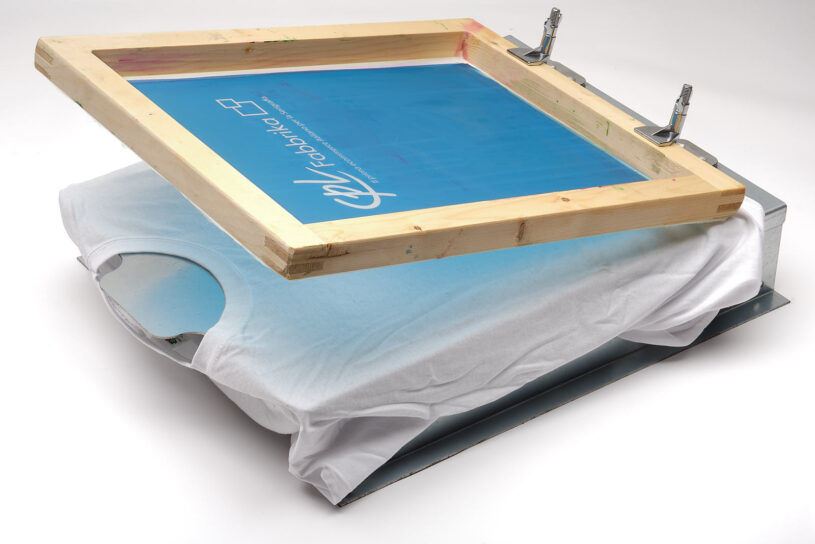
To know the process of screen printing, getting to know the traditional technique is essential. The first thing done is to prepare the transparency film and screens with the required designs for printing. Different screens must be prepared for each color. A few things to know about screen printing are,
Transparency Film
The first step is to prepare a transparency film, and the design is printed in black. This design is used to expose the emulsion, and the stencil of the required design is created on the screen.
The transparency film helps hide the print from UV (ultraviolet) light exposure. The film won’t let the printing dry and will help leave pores on the screen that allows ink to pass, and the design gets printed.
Coating The Screens
The next step is to coat the screens with photo emulsion, where screens are prepared with the required design, like a stencil. It involves using photosensitive chemicals (emulsion) and the light beam.
The emulsion is applied on the front and back of the screens when coating it. This process must be done in a dark room with red light, just like the film-developing procedure, due to the light sensitivity of the emulsion. The light should not hit the screens during this process.
Exposing Screen
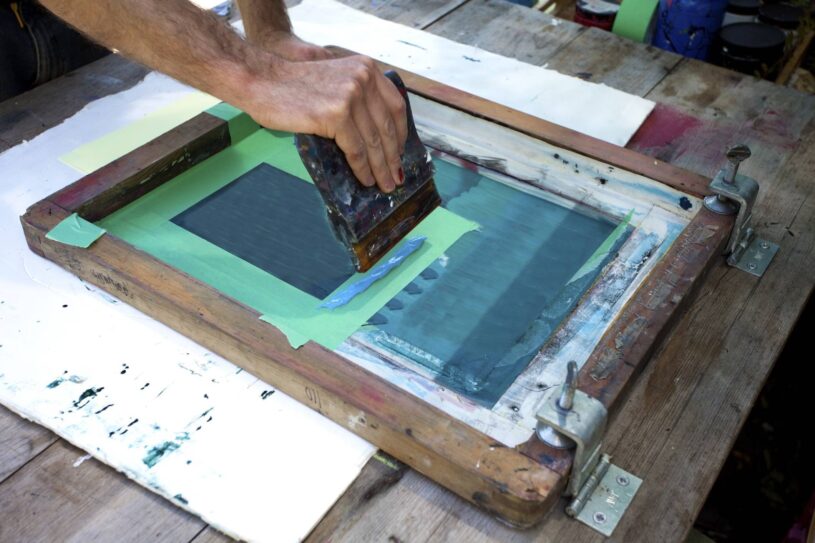
After coating the screens, it is exposed to get the design needed to print. This process helps in transferring the stencil design to the screens. Under the UV light, the coated screens get exposed beside the transparency film that has the printed design. After ten minutes, the stencil is washed with a power washer to remove the leftover emulsion.
Printing The Design
One of the critical aspects of screen printing is knowing whether the design has more than one color in advance. If different colors are in the design, different screens must be made for each color.
The transparency film is prepared and customized as required; the screens and inks are readied, and printing starts. For applying the ink, the squeegee is used, which helps move the ink from top to bottom so the ink passes through the layer.
Supplies For Screen Printing
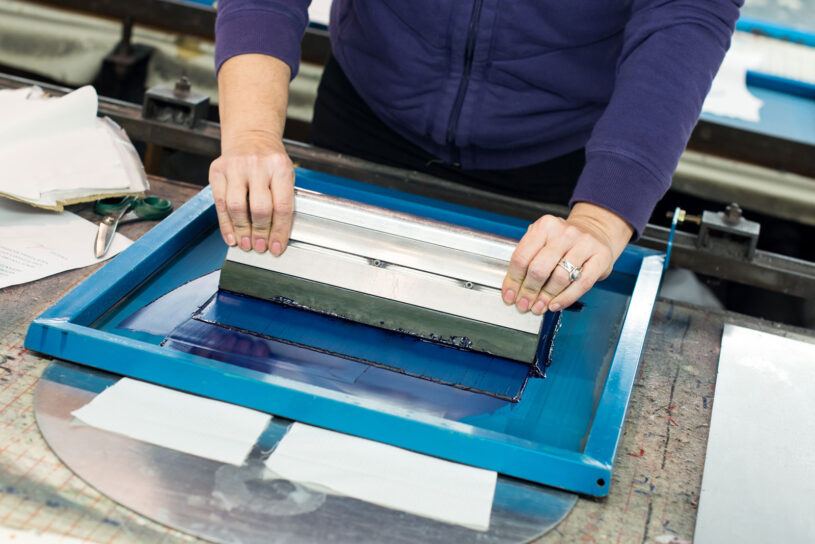
Various printing supplies are needed to do printing, and these materials are essential to start a business. A few of the materials used for printing include,
Transparency Film
The required design is first printed on the transparency film, which is a polyester material. The design is printed in black on this material and is used to expose the screen, which helps create a stencil of the design that has to be published.
Frame For Screen Printing
The print frame has three types: aluminum, wood, or steel. The aluminum frame is the preferred frame as these are exposed to water when printing. The most common frame size for small-time professionals is 40 x 50 cm and 30 x 40 cm.
Mesh For Screen Printing
The mesh used for print gets stretched onto the frame, and it will be coated with photo emulsion, and the ink passes through it.
Many types of mesh are available and measured by the number of threads per square centimeter; the favorite ones are 43T and 90T meshes—the higher the mesh count, the higher the print resolution.
Higher mesh counts should be used on wooden items, and lower mesh counts on fabrics during screen print will help the design stand out when the item is finally ready.
Photo Emulsion
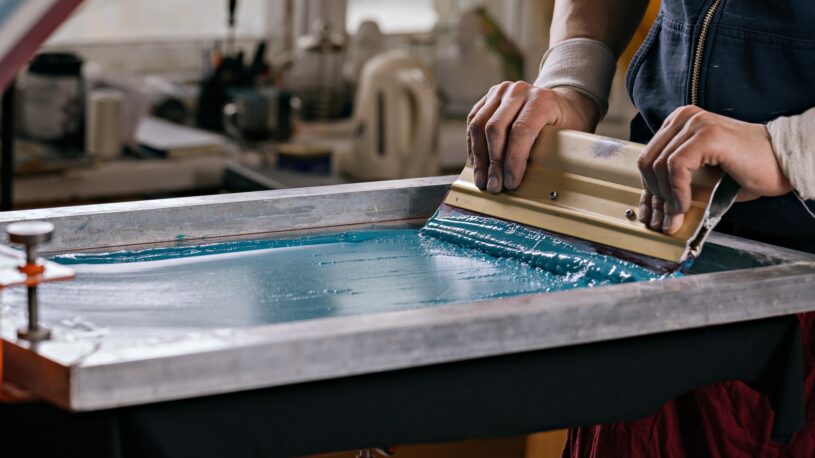
Photo emulsion is needed for screen print. The material choice will depend upon the mesh used as the substrate and the type of ink used.
An emulsion scoop coater is also required to spread it onto the screen. This scoop is a rectangular straight-edge apparatus that helps in dosing the product as it helps in applying the emulsion evenly onto the screen.
Exposure Unit For Printing
The exposure unit is vital for print. It gets used when exposing the screens, almost like a photocopier machine. This tool lights up the transparency film when contacted with UV light and helps transfer the design onto the mesh.
Inks Used For Screen Printing
For starting printing, different types of inks have to be selected to start the work. They are water-based and solvent-based inks.
Using Squeegee
A squeegee is needed to print the design as this tool helps move the ink up and down to transfer the ink onto the final product.
This product has a handle made of aluminum or wood and a flexible rubber of different hardness. The standard squeegees used are sizes 65A and 75A, having a square cut.
Turning Hobby Into Business
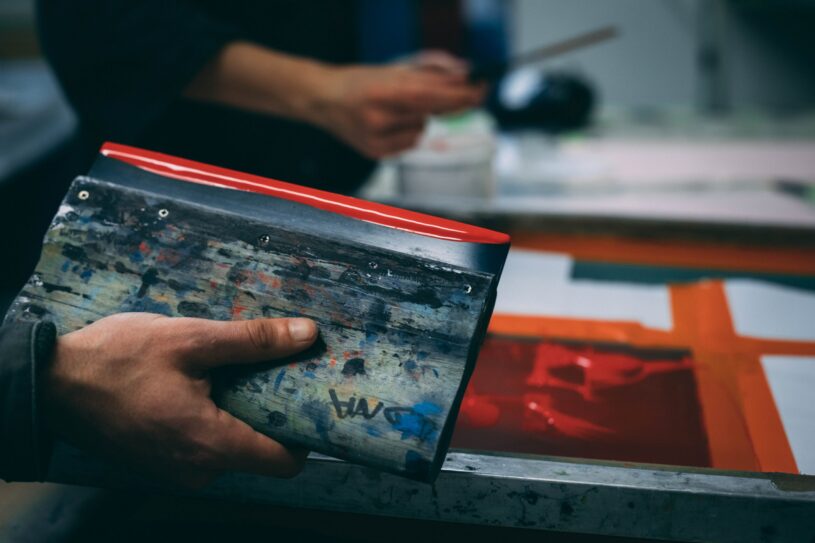
When planning to turn a hobby into a business, it is vital to consider the marketing aspects involved. There are hobbies that, when perfected, get easily monetized, especially handmade products, and screen print is known as a handiwork creative art.
Differentiating between hobby and business is essential because it involves taxation. Various countries have different surcharges when hobby income is involved. In Canada, the taxation department accepts a hobby income provided the expenses for the hobby are more than the income earned. If profit is earned, then that will have different implications.
In America, converting a hobby to a business does offer some benefits in tax deductions. All income tax papers should always get appropriately maintained to avoid future headaches.
Conclusion
Transitioning from a screen printing hobby to a business requires dedication, planning, and commitment. A proper marketing strategy, pricing, and identifying prospective customers through market research are essential.
Proper screen print materials and equipment that help give top-notch print quality should be purchased. Selecting the press to the type of ink used for imprinting determines the result of the design.
Apart from that, all businesses should have an online presence as the prospective customers are worldwide. With proper hard work and dedication to the craft, new beginners in the screen printing business can have a future aspiring business career when transiting from hobby to business.
